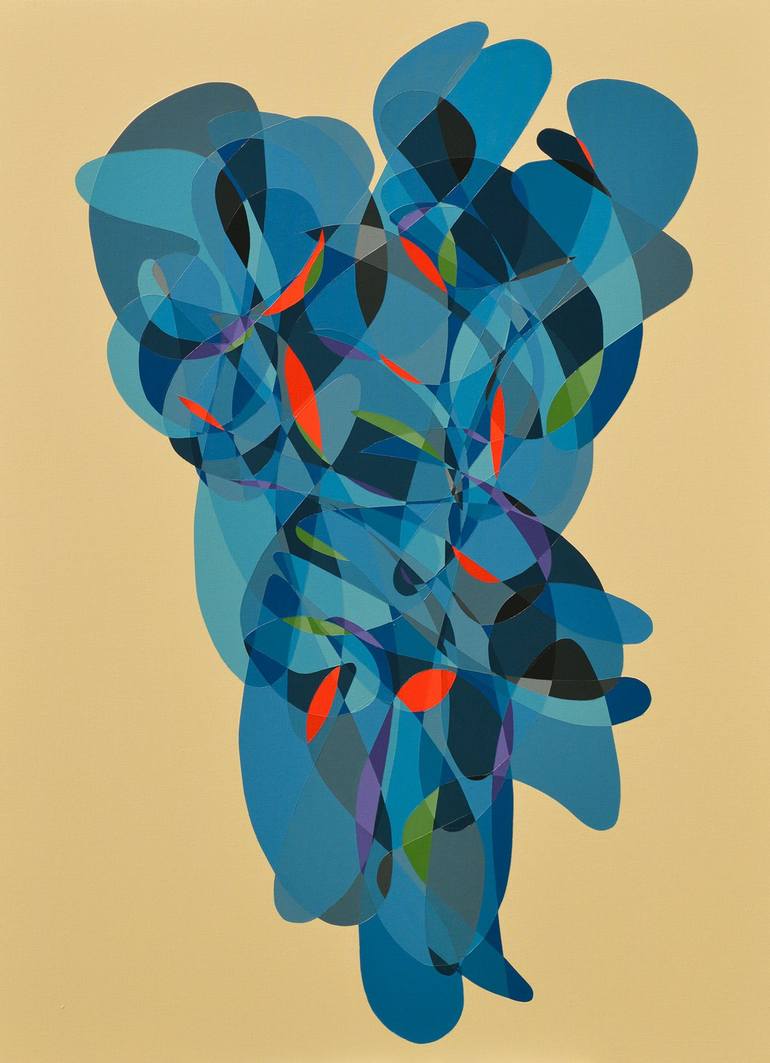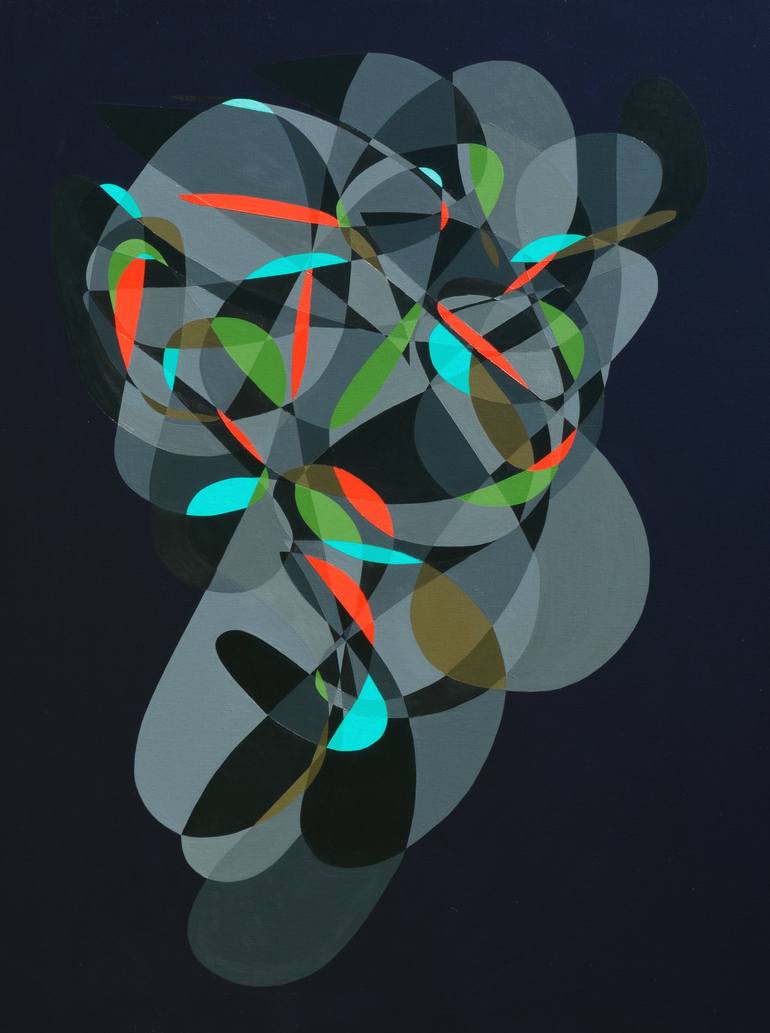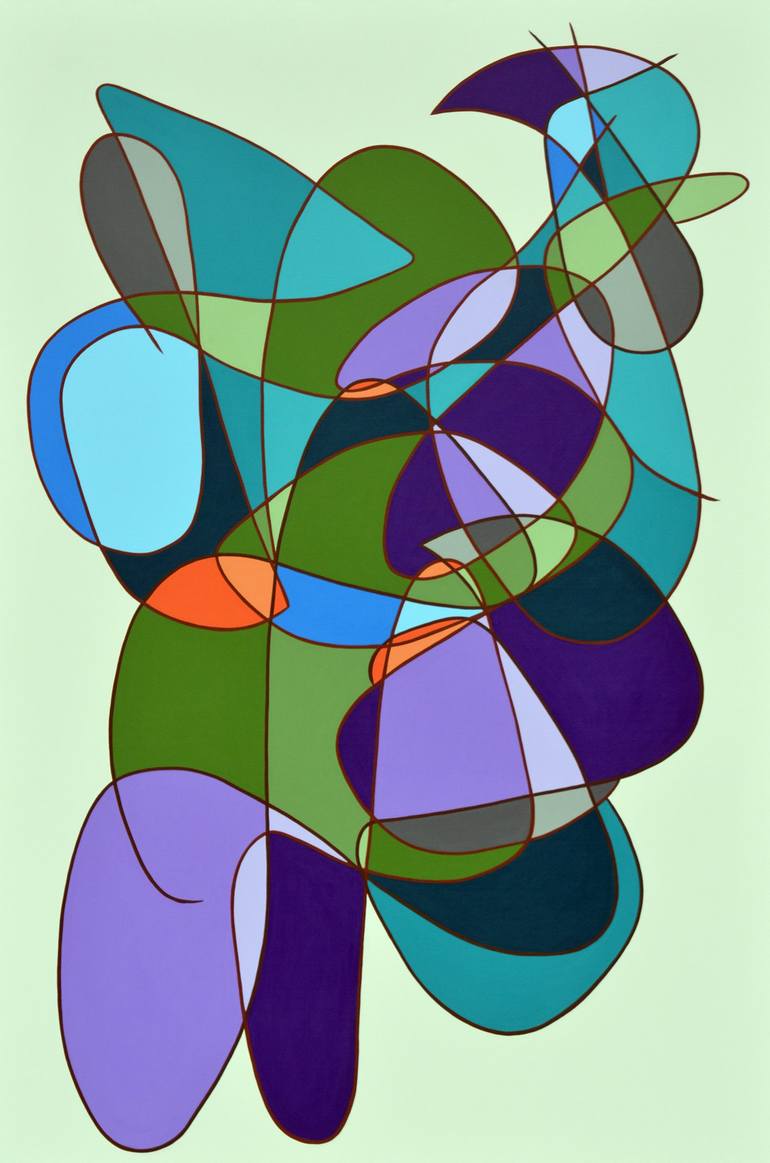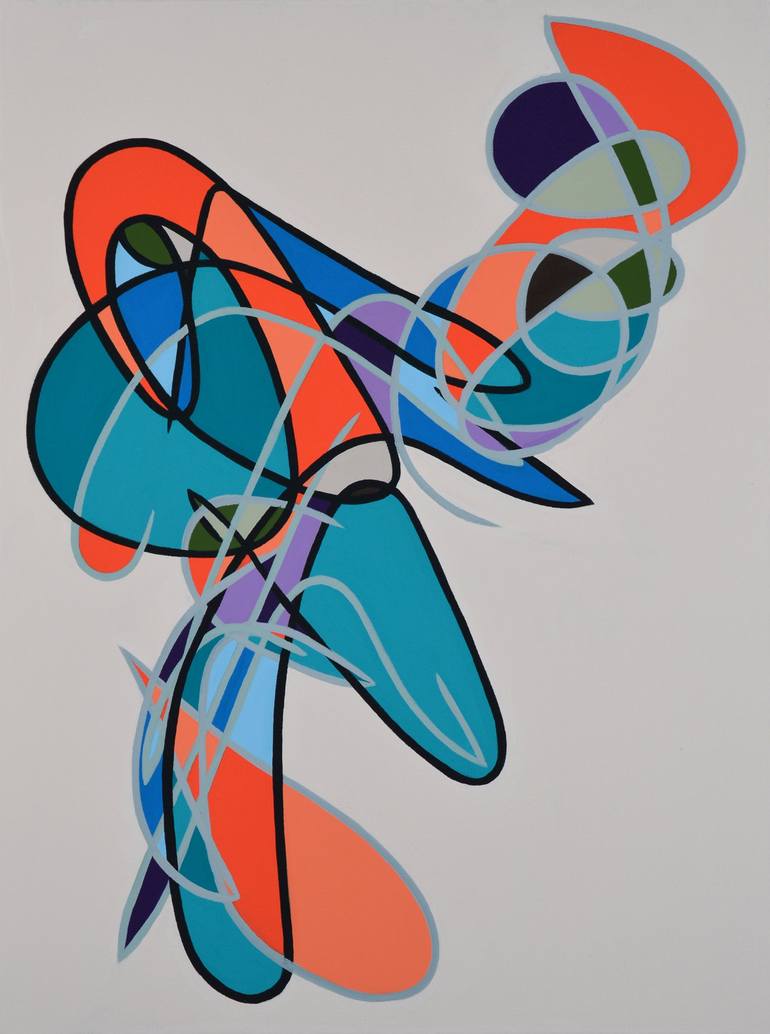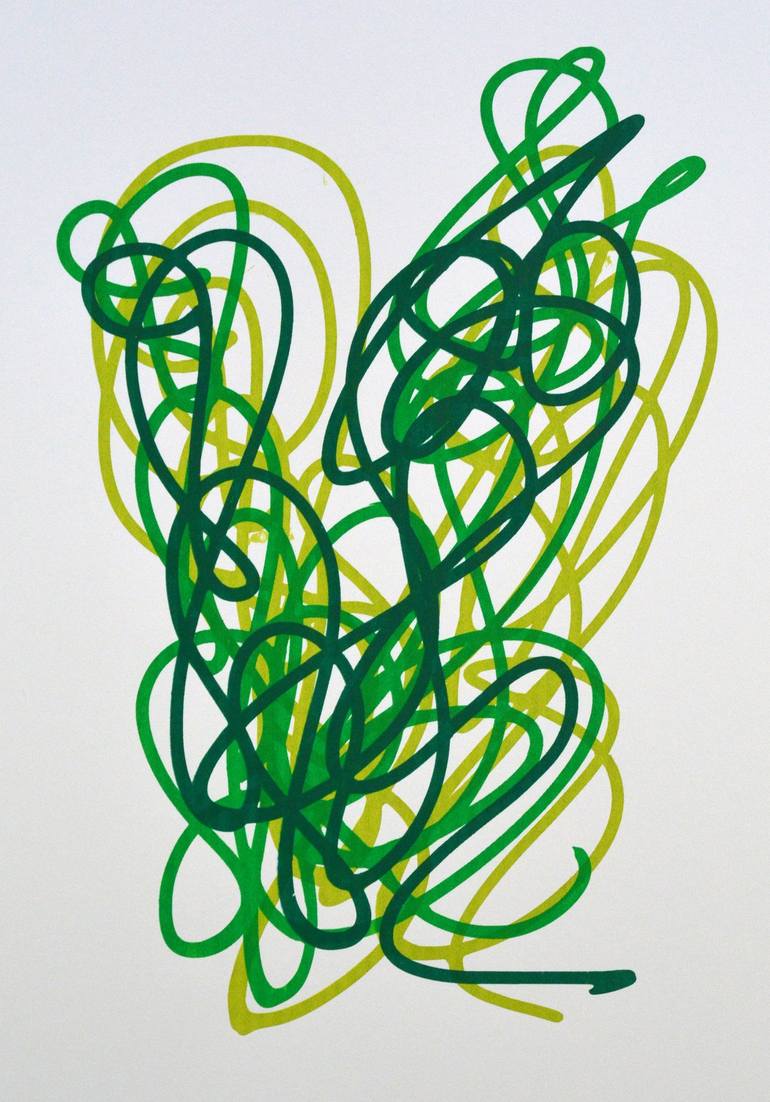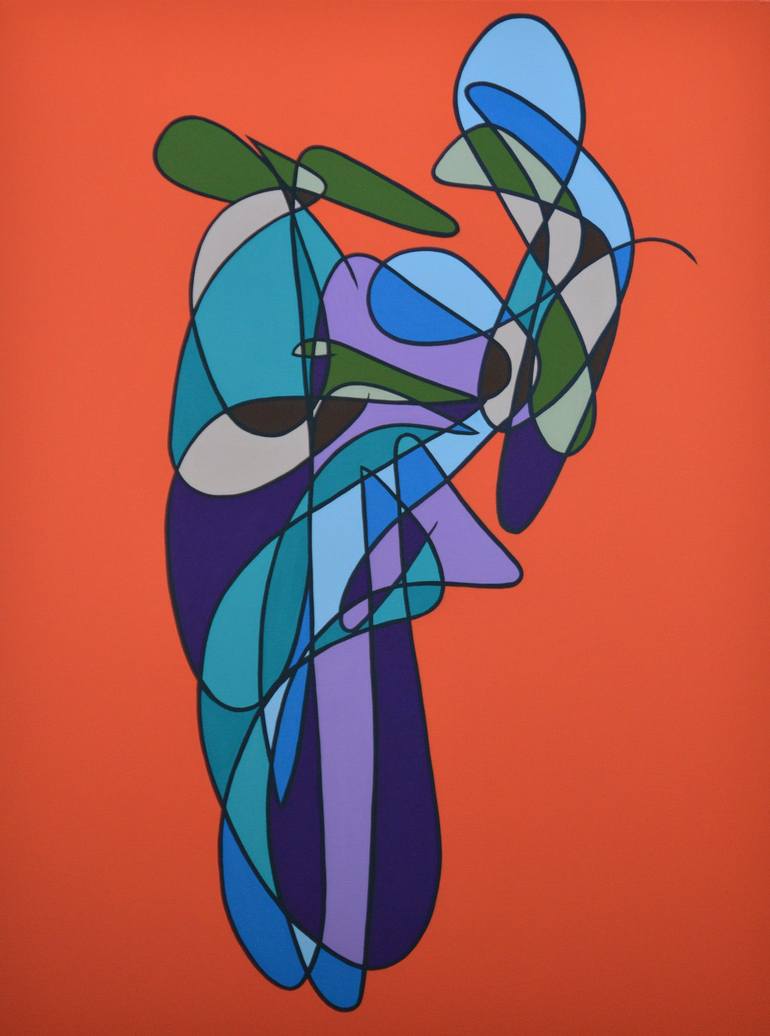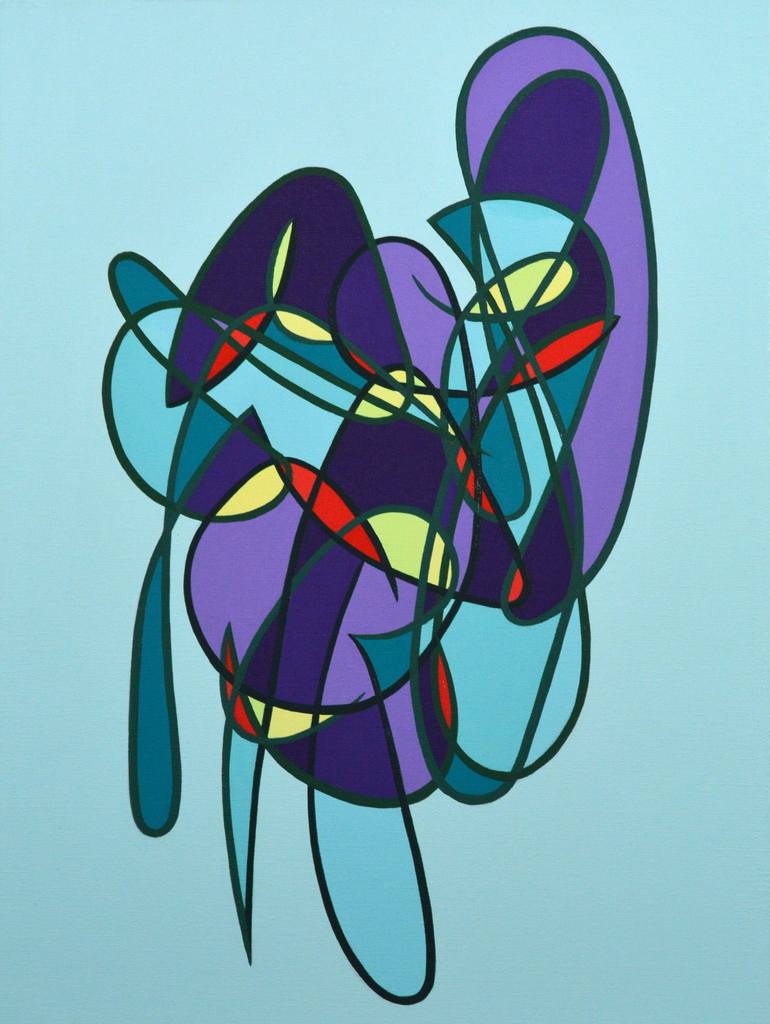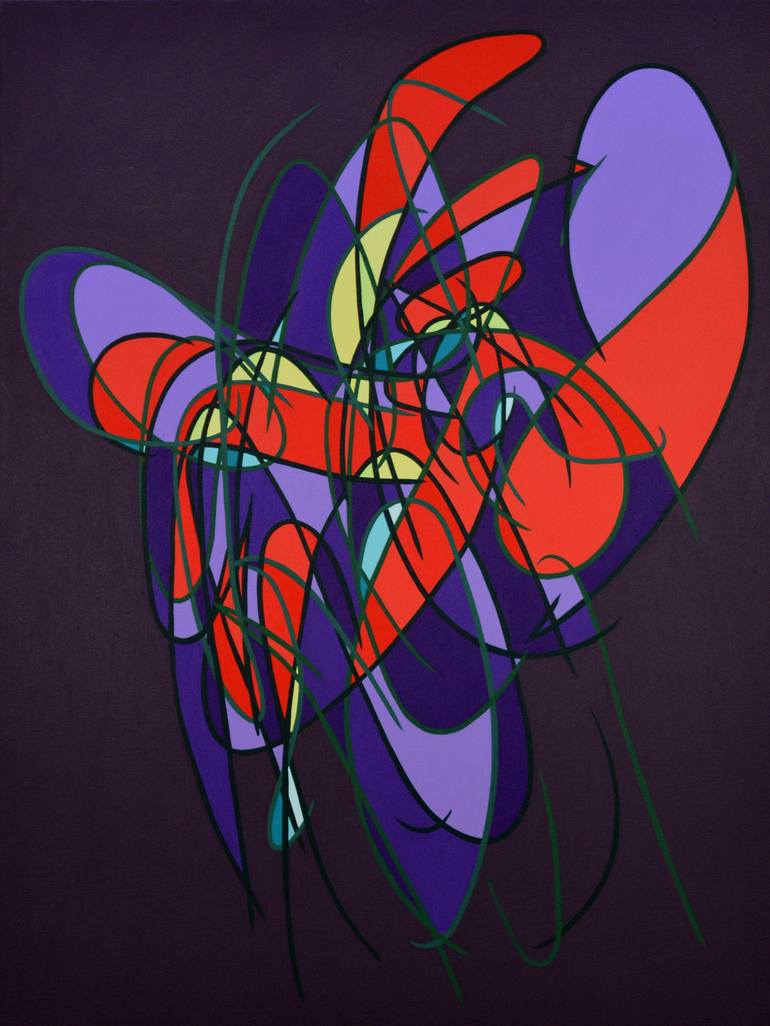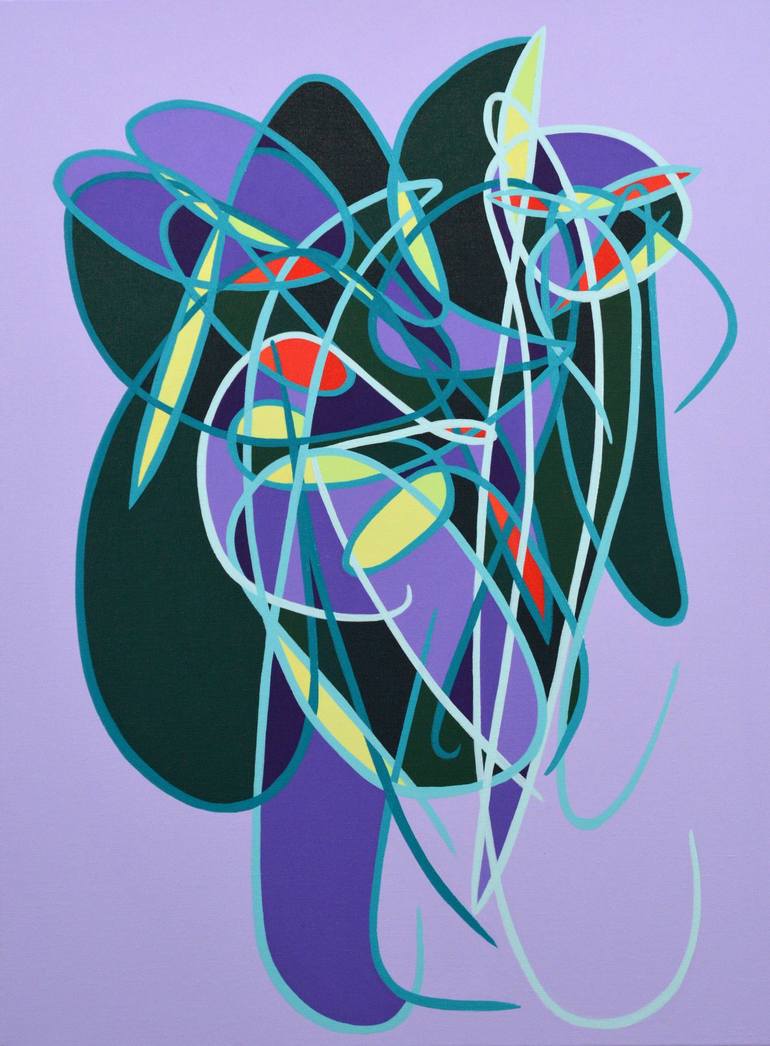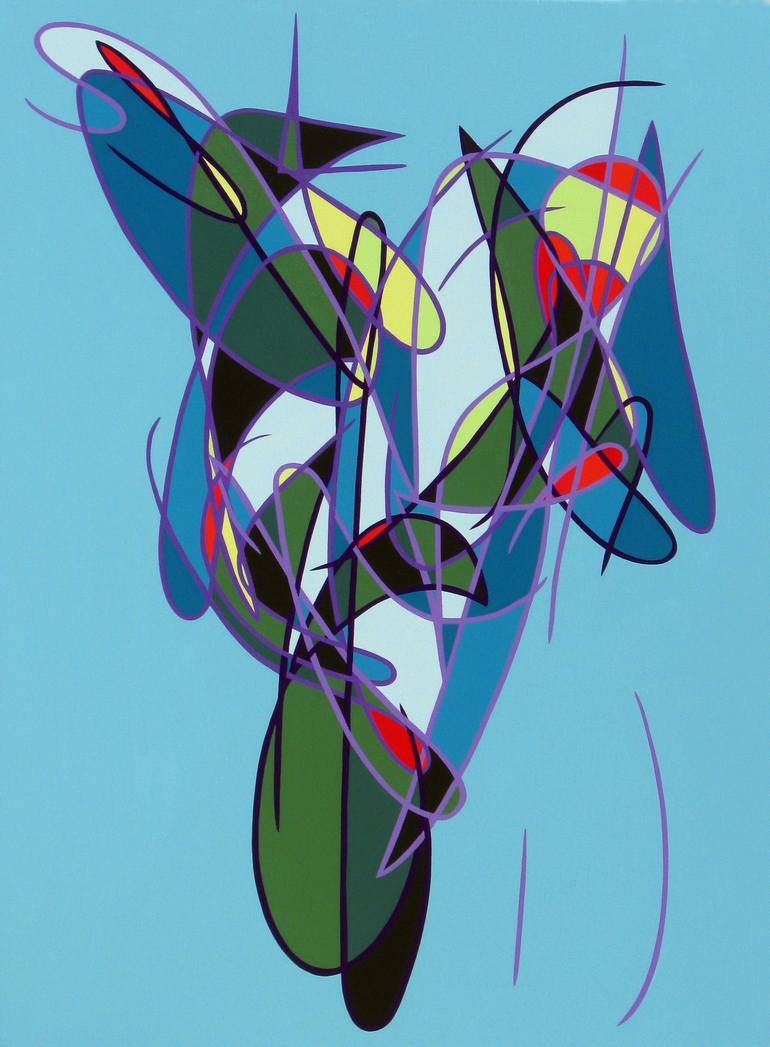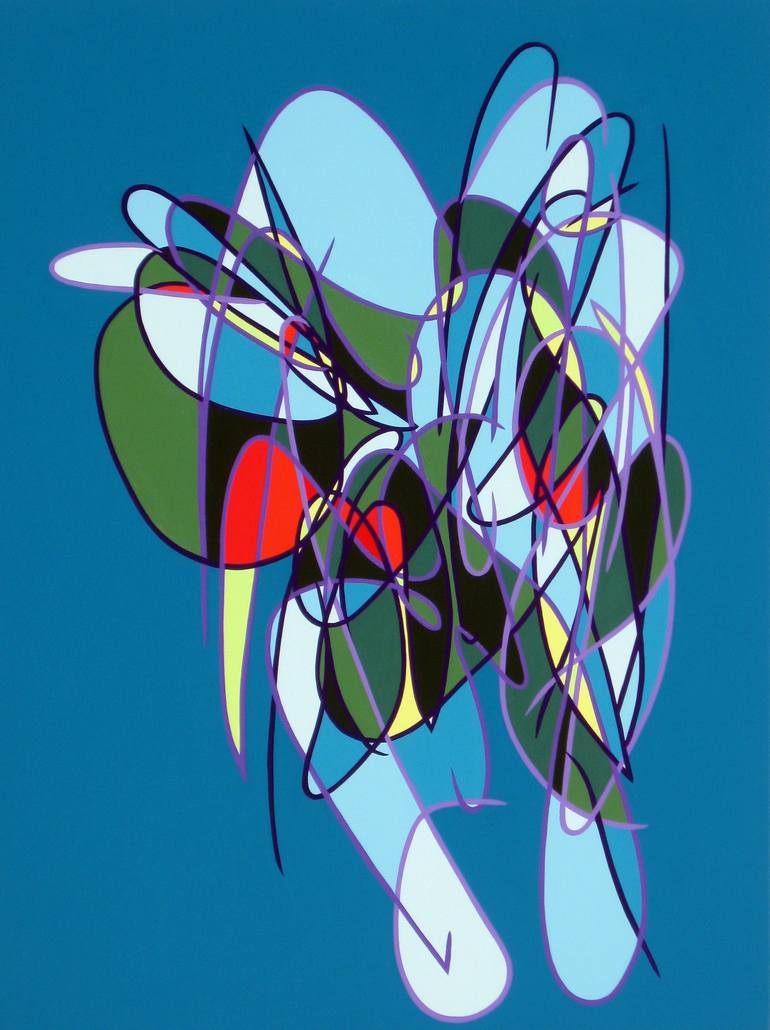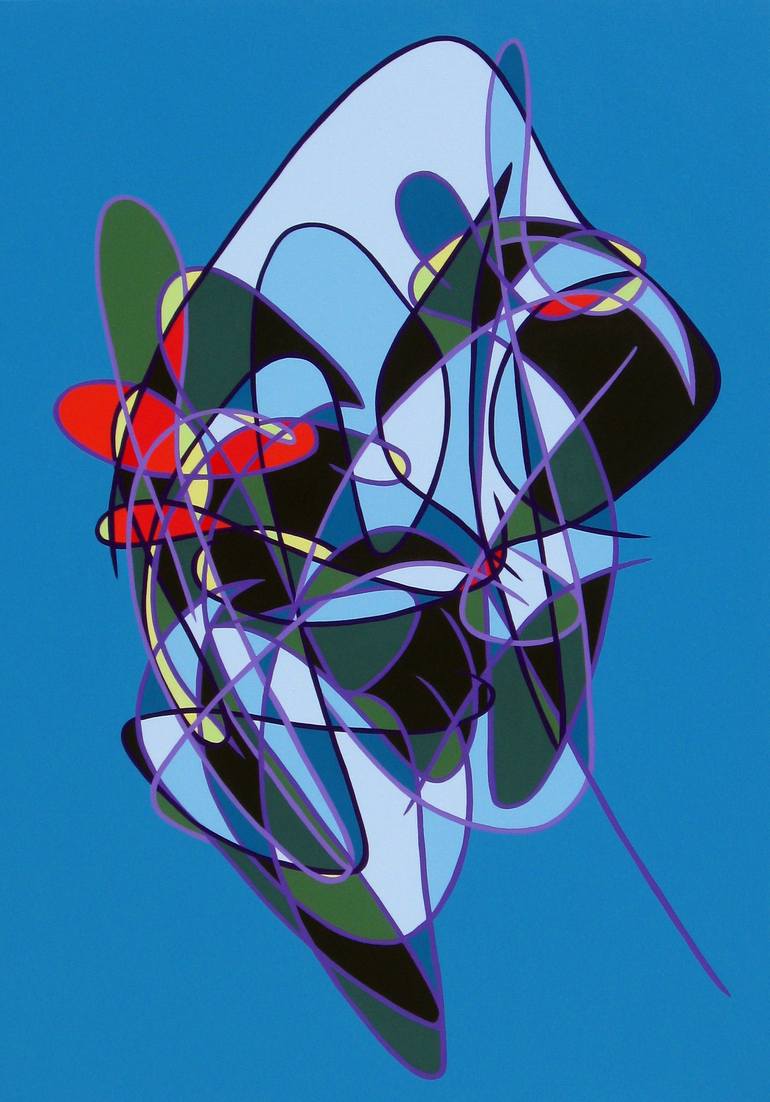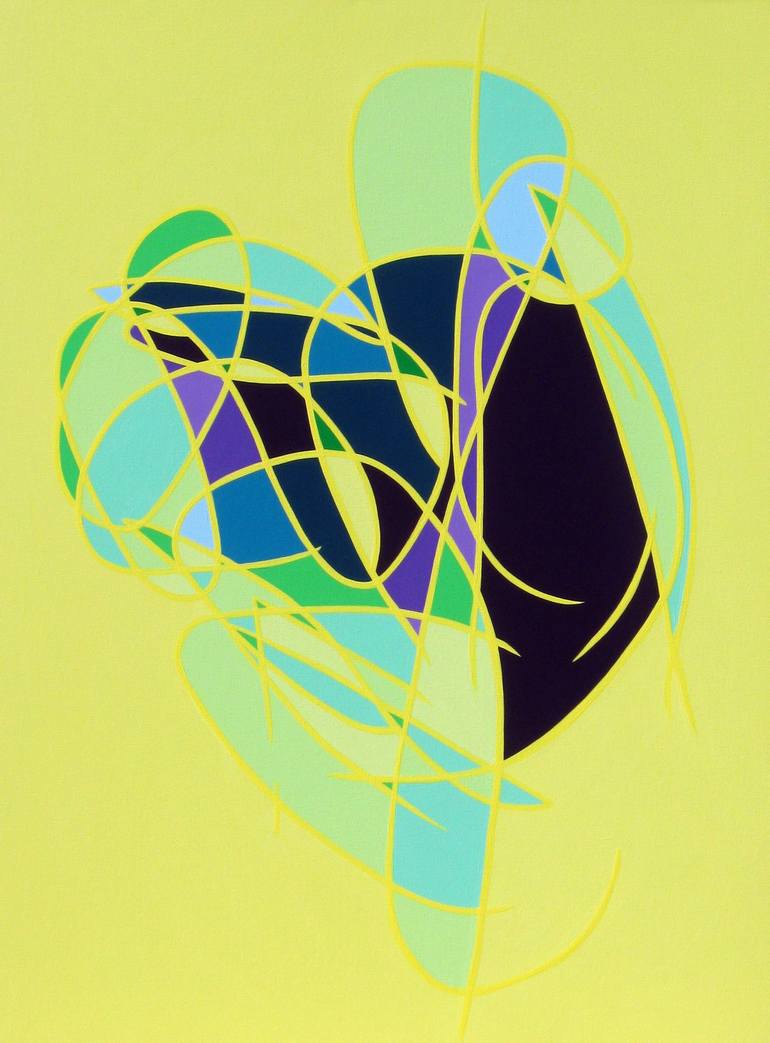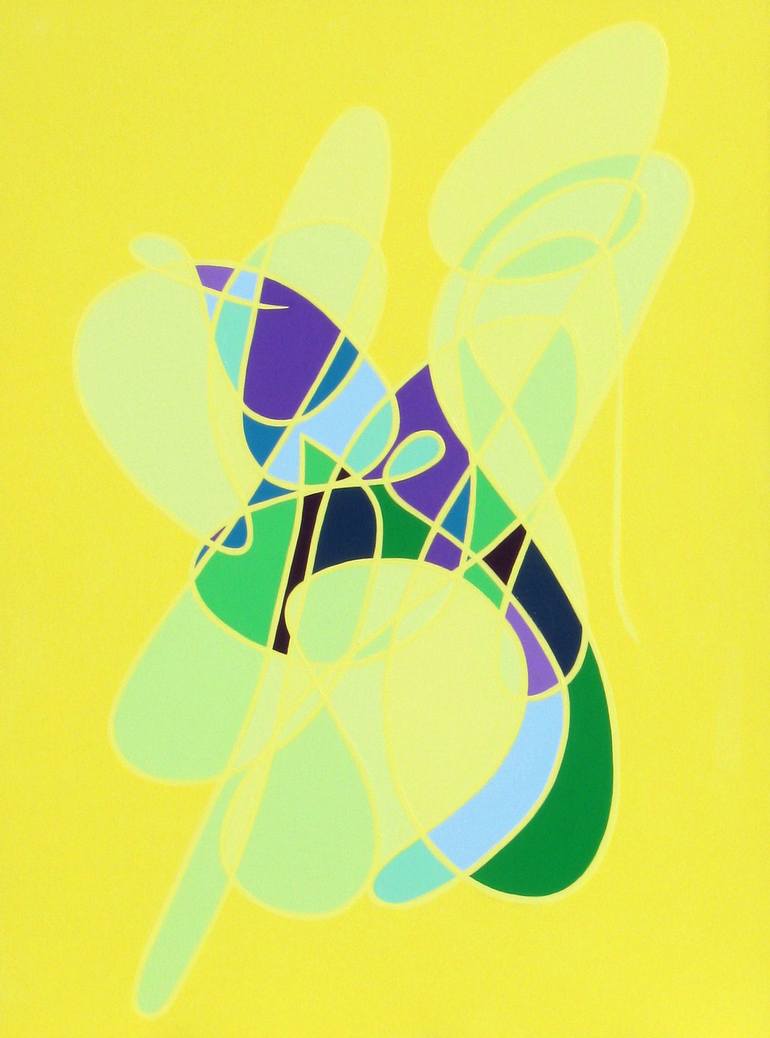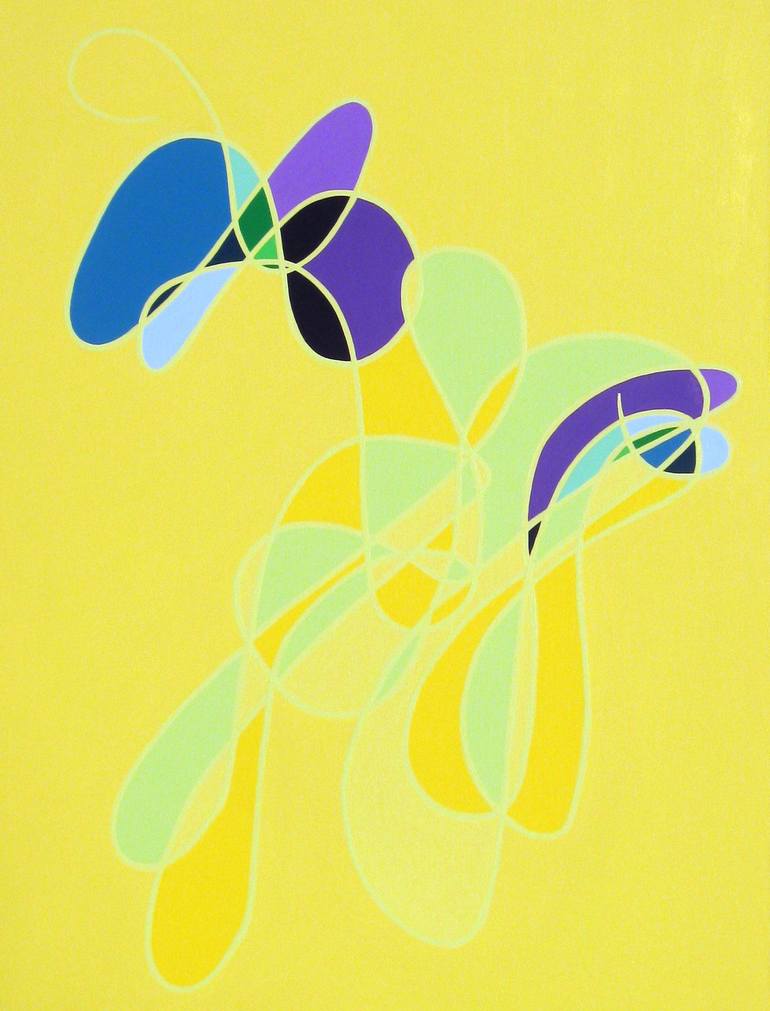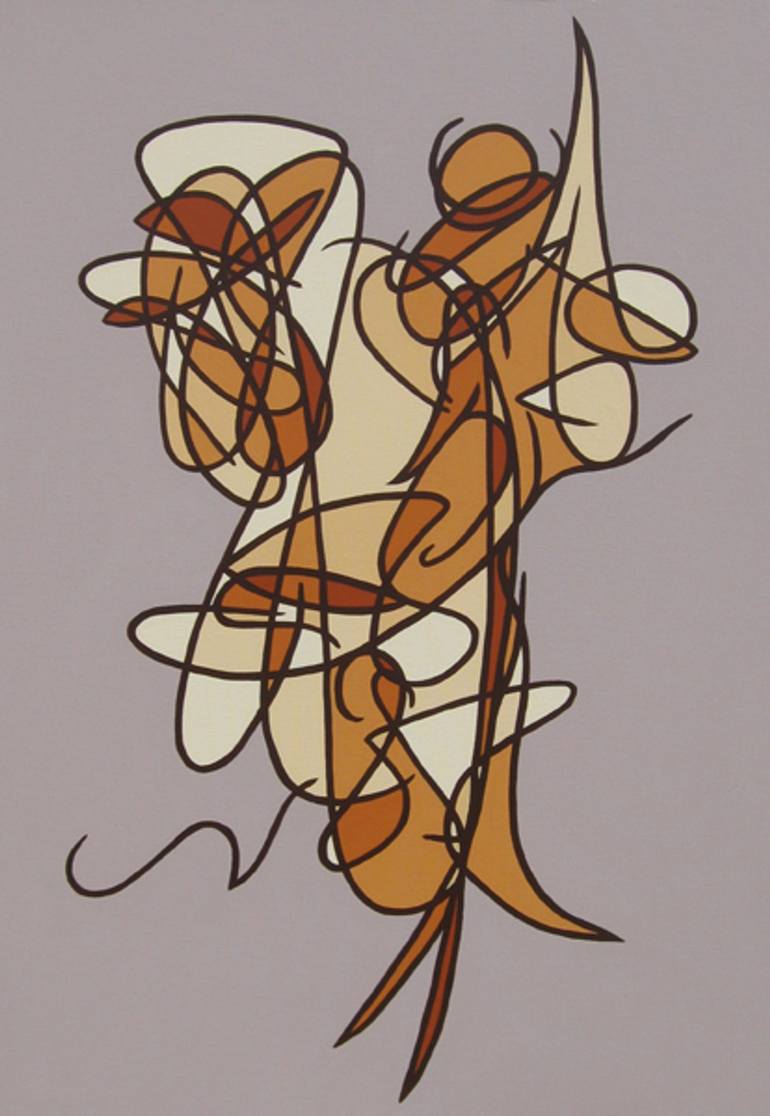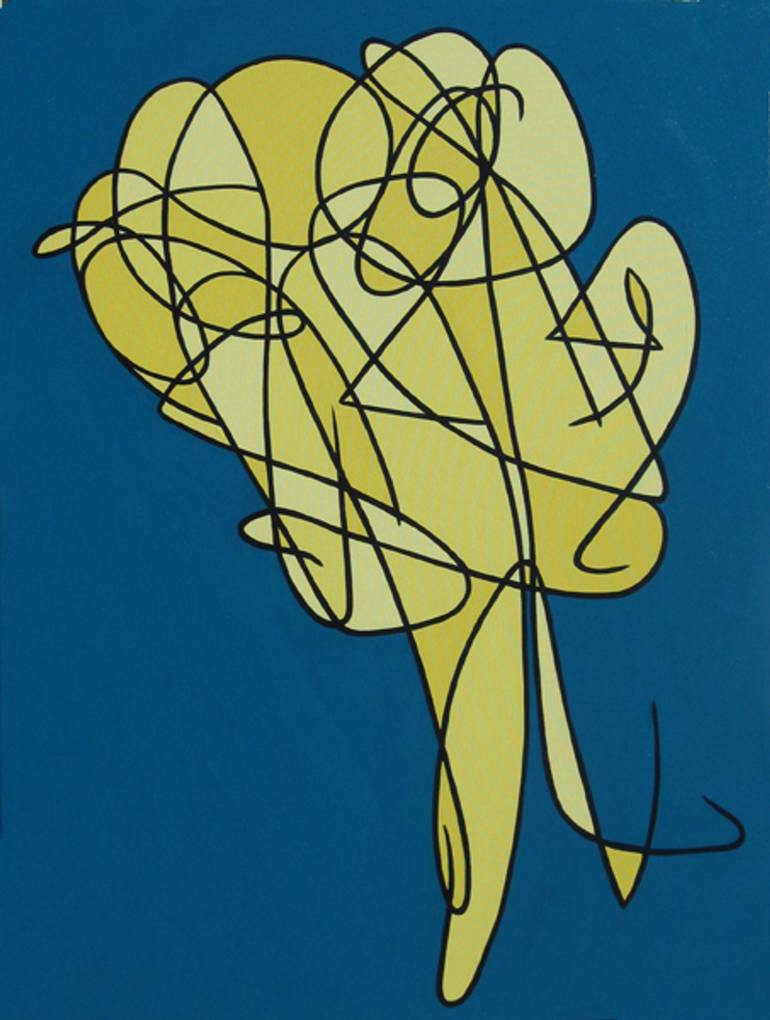Ross Ford
Each of these figures is a face. This practice began as doodles in my notebook margins. I would draw faces and heads, trying to show different expressions in each. Given space I might draw whole figures but often it was just the heads. Notebooks became a gallery of subtle expressive moments. By the time I was in college it had progressed to pages filled with irregular rows of heads.
In 2005, I began creating paintings based on selected drawings from my books. As I completed more paintings I began to notice the steady, chaotic transformation o f the heads. Once I had painted the more obvious faces, the less obvious, more abstract faces began to interest me more. This interest fed back into the drawing process and the shapes began to shift even further. I began to draw more faces when preparing for each new painting, looking for shapes and figures that I hadn’t seen yet. After several hundred paintings, it had evolved into code, multiple face shapes overlaid into a complex abstraction, pulsing figures with multiple eyes, contours of features from different angles. Sorting through hundreds of drawings trying to find ‘the one’ led me to study the structure of the facial code, comparing the feature placement, angles, the linear “construction”, density, speed and shape. One practice that grew out of this study was to draw in equally spaced grids.
At some point the work split into two groups, larger paintings and line-based work in ink. The paintings are intense focus on a single drawing with careful attention paid to the use of color. Color allows me to experiment with how the eye travels across the figure, suggesting movement and dimensionality. The drawings are focused on the effect of multiples, emphasis on the variation between iterations within a set.
A face is a schema; a set of symbols that encode a complex array of varying emotions that can convey meaning across cultural boundaries. The relationship of the components, the angles, size, all play a part in how a face is interpreted. This schema is used to communicate emotion; it is a pre-language method of visual communication. Speakers of different languages can interpret the emotions on different faces; even animals can read and convey emotion through facial expressions. Humans also ascribe emotions to objects that appear to have faces, such as cars.
